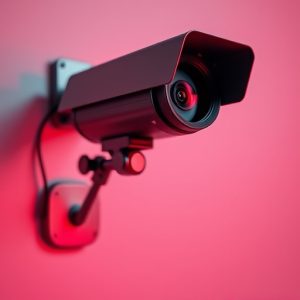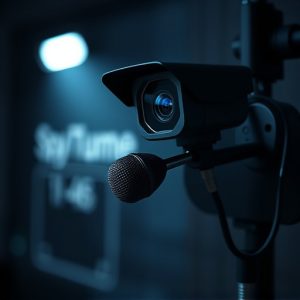Unveiling Hidden Threats: Spy Cameras and Microphones Exposed
Spy cameras and microphones are advanced tools used for discreet surveillance, offering high-quality…….
Spy cameras and microphones are advanced tools used for discreet surveillance, offering high-quality video and audio recordings without detection. These devices come in various forms, from hidden cameras disguised as everyday objects to tiny microphones integrated into surroundings. They are widely used in security, law enforcement, and private investigations due to their effectiveness. Detection methods include EMF detectors, visual inspection with advanced technologies, RF scanners, and software analyzing sound patterns. However, unauthorized use of these devices, known as wiretapping, is illegal and raises significant privacy concerns. To protect against them, stay vigilant by regularly inspecting common areas, educate yourself about concealment methods, and implement security measures like privacy films, encrypted communications, and advanced cybersecurity.
Uncover the world of hidden microphones and spy cameras—sneak peeks into private spaces that raise serious privacy concerns. This comprehensive guide explores advanced surveillance techniques, from understanding their capabilities to detecting their presence. We delve into legal ramifications, emphasizing the importance of awareness in an era where these devices can go unnoticed. Learn practical steps to protect your personal and professional life from unwanted eavesdropping, ensuring peace of mind in a technologically evolving world.
Understanding Spy Cameras and Microphones: A Comprehensive Overview
Spy cameras and microphones are sophisticated pieces of technology designed for discrete surveillance, often used in situations where covert observation is necessary. These devices are meticulously engineered to capture footage and audio without detection, making them powerful tools for various purposes. Understanding their capabilities and limitations is essential for anyone considering their use.
A spy camera typically refers to a hidden or concealed video recording device, designed to be unobtrusive and often resembles everyday objects like flashlights, pens, or even wall clocks. They can capture high-resolution footage, sometimes with night vision capabilities, making it possible to monitor activities in low-light conditions. On the other hand, spy microphones are audio surveillance devices that can record conversations from a distance without drawing attention. These microphones are often tiny and designed to blend into their surroundings, such as appearing like everyday objects or even being integrated into furniture. Together, these technologies offer an extensive range of options for monitoring activities, making them popular choices in fields like security, law enforcement, and private investigation.
Detection Methods: How to Identify Hidden Microphones
Identifying hidden microphones, often referred to as spy cameras or bugs, requires a keen eye and specialized knowledge. One common method is to use electromagnetic field (EMF) detectors. These devices can pick up on the unusual electromagnetic signals that many hidden microphones emit, helping users locate them in various environments. Another approach involves visual inspection with high-resolution cameras capable of detecting tiny devices, especially when combined with infrared or thermal imaging technology.
Additionally, audio playback and analysis tools can assist in detection. Playing back recorded sounds in reverse or using specific frequencies known to activate hidden mics can sometimes reveal their presence. Advanced techniques include utilizing radio frequency (RF) scanners to detect signals from wireless microphones and employing software that analyzes sound patterns for unusual activity—all effective ways to uncover spy cameras and microphones in both personal and professional settings.
Legal Implications and Privacy Concerns
The presence of hidden microphones, often disguised as everyday items like clocks or smoke detectors, raises significant legal implications and privacy concerns. In many jurisdictions, wiretapping—the unauthorized recording of conversations—is a criminal offense. The use of spy cameras and microphones in such a manner can lead to severe penalties, including fines and imprisonment, underscoring the importance of consent and legal authorization for any form of surveillance.
Privacy is another critical aspect affected by hidden microphones. Individuals have a reasonable expectation of privacy in their homes and personal spaces, and the discovery of these devices can infringe upon that right. This invasion of privacy can have profound effects on mental health and trust, as people may feel constantly monitored and lose control over their personal conversations. The legal framework surrounding these issues continues to evolve, reflecting the societal need to balance security with individual freedoms.
Preventing and Protecting Against Hidden Microphones in Everyday Life
Preventing and protecting against hidden microphones, often disguised as everyday items like clocks or smoke detectors, is an essential aspect of modern privacy awareness. With the advancement in technology, spy cameras and microphones have become more compact and harder to detect. One of the primary measures to safeguard your conversations and personal spaces is staying vigilant and proactive. Regularly inspect common areas for any signs of these devices, especially in public places like meeting rooms or homes you visit. Look for unusual objects or devices that might not belong and raise red flags if something seems amiss.
Education plays a pivotal role in this regard. Being informed about the various methods used to conceal spy cameras and microphones can help individuals recognize potential threats. From knowing how to identify hidden bugs in walls or under doors to understanding the technology behind voice-activated devices, awareness is key. Additionally, keeping personal spaces secure by using privacy films on windows, encrypting digital communications, and employing advanced cybersecurity measures can significantly reduce the risk of covert recording.


